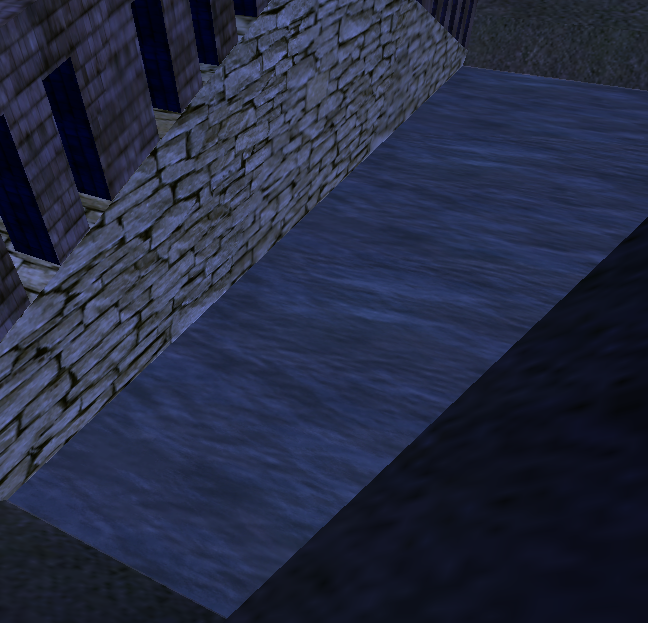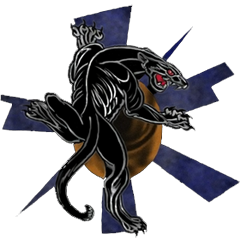Home » Renegade Discussions » Mod Forum » Mediterranean Map
| Mediterranean Map [message #456400] |
Thu, 29 September 2011 20:21  |
 |
 zunnie
zunnie
Messages: 2959
Registered: September 2003
Location: Netherlands
Karma: 0
|
General (2 Stars) |

|
|
http://www.moddb.com/mods/tcw/
This map will be somewhat bigger than i am used to make. The bases
are split in two and reside on seperate tropical islands connected
by bridges. There will be teleporter objects in the bases to quickly
teleport to the other end of the map.
For now it will be WF's, which i may replace at a later time with the Airfields.

[Updated on: Sat, 01 October 2011 15:11] Report message to a moderator |
|
|
|
|
|
|
|
|
|
|
|
|
|
| Re: Mediterranean Map [message #456461 is a reply to message #456400] |
Fri, 30 September 2011 17:33   |
 iRANian
iRANian
Messages: 4313
Registered: April 2011
Karma: 1
|
General (4 Stars) |
|
|
Looking really symmetric at the moment, you can take a look at Islands in w3dview for some ideas to make it look less symmetric, I'd also extend the water itself a bit (although I don't know the draw distance and fog settings you'll be having on that map). Other than that you'll just need to refine the map with additional texture work, hilly terrain and some objects like rock and Tiberium stuff placed here and there.
Long time and well respected Renegade community member, programmer, modder and tester.
Scripts 4.0 private beta tester since May 2011.
My Renegade server plugins releases
|
|
|
|
|
|
|
|
|
|
|
|
|
|
| Re: Mediterranean Map [message #456481 is a reply to message #456400] |
Sat, 01 October 2011 00:33   |
 |
 Aircraftkiller
Aircraftkiller
Messages: 8213
Registered: February 2003
Karma: 1
|
General (5 Stars) |
|
|
| Quote: |
How to Critique and Write about Art
The following steps—description, analysis, interpretation and evaluation— are the steps in a formal critique. It is called the Feldman method. It is an established critique method that has been used by students and professionals alike for over 50 years.
Please respond to the following sections in paragraph form, using complete sentences. Use the questions provided as a guide to provide you with information for your paragraphs.
Describe
This stage is like taking inventory. You want to come up with a list of everything you see in the work. Stick to the facts. Imagine that you are describing the artwork to someone over the telephone.
List
Name of artist, title of work, and gallery or location of artwork.
If this is an in-class critique of your own or another student's work, simply list your own or their name. For example, "This is a critique of my self-portrait" or "This is a critique of Art See's self-portrait."
Note First Impression
Make a note of your first spontaneous reaction to the artwork. By the end of the process you may understand your first impression better or you may even change you mind. There are no wrong answers.
Analyze
Try to figure out what the artist has done to achieve certain effects. You should refer to your first impressions and try to explain how the artwork achieves that reaction.
Q. Use the vocabulary you learned in class. For example, if you're looking at a chain-link graphic, you learned reversals, transparency, complementary or analogous color, etc.
Q. How are the elements of art (color, shape, line, texture, space, form, value) and the principles of design (balance, contrast, emphasis, movement/rhythm, unity, variety) used in this artwork?
Q. What do you notice about the artist's choice of materials?
Q. What grabs your attention in the work? Refer to your first impression.
Q. Do you see any relationship to the things you listed during the description stage?
Interpret
Try to figure out what the artwork is about. Your own perspectives, associations and experiences meet with "the evidence" found in the work of art. All art works are about something. Some art works are about color, their subject matter, and social or cultural issues. Some art works are very accessible — that is, relatively easy for the viewer to understand what the artist was doing. Other works are highly intellectual, and might not be as easy for us to readily know what the artist was thinking about.
Q. What is the theme or subject of the work? What mood or emotions does the artwork communicate?
Q. What is the work about; what so you think it means?
Q. Why do you think that artist created this work?
Q. What do you think the artist's view of the world is?
Evaluate
This is a culminating and reflecting activity. You need to come to some conclusions about the artwork based on all the information you have gathered and on your interpretations.
Q. Have your thoughts or feelings about the artwork changed since your first impression? If so, how? What made you change your mind?
Q. If not, can you now explain your first reaction to the work?
Q. What have you seen or learned from this work that you might apply to your own art work or your own thinking?
|
You can easily apply this methodology to critiquing work developed for games, especially for Renegade. Try it next time. You'll get a positive response and I personally guarantee the forum won't generate negative comments toward you.
[Updated on: Sat, 01 October 2011 00:38] Report message to a moderator |
|
|
|
| Re: Mediterranean Map [message #456483 is a reply to message #456481] |
Sat, 01 October 2011 00:37   |
 |
 sla.ro(master)
sla.ro(master)
Messages: 610
Registered: September 2010
Location: Romania
Karma: 0
|
Colonel |
|
|
| Aircraftkiller wrote on Sat, 01 October 2011 10:33 |
Right, they're just stolen from other games. By the way, if you wanted to show some professionalism: try critiquing his work instead of simply bashing it because you got forced out of the project he's working on.
Here, try this next time:
| Quote: |
How to Critique and Write about Art
The following steps—description, analysis, interpretation and evaluation— are the steps in a formal critique. It is called the Feldman method. It is an established critique method that has been used by students and professionals alike for over 50 years.
Please respond to the following sections in paragraph form, using complete sentences. Use the questions provided as a guide to provide you with information for your paragraphs.
Describe
This stage is like taking inventory. You want to come up with a list of everything you see in the work. Stick to the facts. Imagine that you are describing the artwork to someone over the telephone.
List
Name of artist, title of work, and gallery or location of artwork.
If this is an in-class critique of your own or another student's work, simply list your own or their name. For example, "This is a critique of my self-portrait" or "This is a critique of Art See's self-portrait."
Note First Impression
Make a note of your first spontaneous reaction to the artwork. By the end of the process you may understand your first impression better or you may even change you mind. There are no wrong answers.
Analyze
Try to figure out what the artist has done to achieve certain effects. You should refer to your first impressions and try to explain how the artwork achieves that reaction.
Q. Use the vocabulary you learned in class. For example, if you're looking at a chain-link graphic, you learned reversals, transparency, complementary or analogous color, etc.
Q. How are the elements of art (color, shape, line, texture, space, form, value) and the principles of design (balance, contrast, emphasis, movement/rhythm, unity, variety) used in this artwork?
Q. What do you notice about the artist's choice of materials?
Q. What grabs your attention in the work? Refer to your first impression.
Q. Do you see any relationship to the things you listed during the description stage?
Interpret
Try to figure out what the artwork is about. Your own perspectives, associations and experiences meet with "the evidence" found in the work of art. All art works are about something. Some art works are about color, their subject matter, and social or cultural issues. Some art works are very accessible — that is, relatively easy for the viewer to understand what the artist was doing. Other works are highly intellectual, and might not be as easy for us to readily know what the artist was thinking about.
Q. What is the theme or subject of the work? What mood or emotions does the artwork communicate?
Q. What is the work about; what so you think it means?
Q. Why do you think that artist created this work?
Q. What do you think the artist's view of the world is?
Evaluate
This is a culminating and reflecting activity. You need to come to some conclusions about the artwork based on all the information you have gathered and on your interpretations.
Q. Have your thoughts or feelings about the artwork changed since your first impression? If so, how? What made you change your mind?
Q. If not, can you now explain your first reaction to the work?
Q. What have you seen or learned from this work that you might apply to your own art work or your own thinking?
|
You can easily apply this methodology to critiquing work developed for games, especially for Renegade. Try it next time. You'll get a positive response and I personally guarantee the forum won't generate negative comments toward you.
|
if i would criticize his work, he would remove my post..
i let you criticize his map 
Creator of Mutant Co-Op
Developer of LuaTT
|
|
|
|
| Re: Mediterranean Map [message #456484 is a reply to message #456400] |
Sat, 01 October 2011 00:39   |
 |
 Aircraftkiller
Aircraftkiller
Messages: 8213
Registered: February 2003
Karma: 1
|
General (5 Stars) |
|
|
You showed a Renegade water texture, but it lacks the bump mapping shader and the material definitions required for it to look "semi-realistic" or even "realistic" by your own admission. That scene you're showing would require a lot of work to be game-ready or look like anything being made for current games (or even look up to par with Renegade's standards, 2002-era). I can understand what you were attempting to do, creating a bridge with some water running underneath it, but it lacks the subtle details that make a bridge look like a bridge.
The textures are stretched, the water doesn't have any kind of "movement" to it - the texture is perfectly straight and has no distortion where it would be flowing around the bridge.
Your bricks are also rather dull due to the fact that you're relying on the texture to show the details, rather than attempting to break up the tiling by modeling in some bricks yourself. The bricks on top of the lower bricks are stretched. The UVs were not laid out correctly, so they look bunched up and unnatural. You could fix this by making the texture scale proportional to the size of the object.
By the way, if you wanted to show some professionalism: try critiquing his work (Like I did with you) instead of simply bashing it because you got forced out of the project he's working on.
I have my own set of issues with Zunnie's work, but let's focus on you for now.
|
|
|
|
| Re: Mediterranean Map [message #456486 is a reply to message #456483] |
Sat, 01 October 2011 00:43   |
 |
Mauler
Messages: 448
Registered: May 2003
Location: Alberta, Canada
Karma: 0
|
Commander |
|
|
|
Zunnie you are doing a good job, but i feel that the maps are being rushed and not being developed properly and/or long enough tbh..
|
|
|
|
| Re: Mediterranean Map [message #456487 is a reply to message #456484] |
Sat, 01 October 2011 01:02   |
 |
 sla.ro(master)
sla.ro(master)
Messages: 610
Registered: September 2010
Location: Romania
Karma: 0
|
Colonel |
|
|
| Aircraftkiller wrote on Sat, 01 October 2011 10:39 |
You showed a Renegade water texture, but it lacks the bump mapping shader and the material definitions required for it to look "semi-realistic" or even "realistic" by your own admission. That scene you're showing would require a lot of work to be game-ready or look like anything being made for current games (or even look up to par with Renegade's standards, 2002-era). I can understand what you were attempting to do, creating a bridge with some water running underneath it, but it lacks the subtle details that make a bridge look like a bridge.
The textures are stretched, the water doesn't have any kind of "movement" to it - the texture is perfectly straight and has no distortion where it would be flowing around the bridge.
Your bricks are also rather dull due to the fact that you're relying on the texture to show the details, rather than attempting to break up the tiling by modeling in some bricks yourself. The bricks on top of the lower bricks are stretched. The UVs were not laid out correctly, so they look bunched up and unnatural. You could fix this by making the texture scale proportional to the size of the object.
By the way, if you wanted to show some professionalism: try critiquing his work (Like I did with you) instead of simply bashing it because you got forced out of the project he's working on.
I have my own set of issues with Zunnie's work, but let's focus on you for now.
|
thats criticize for 'C&C_Enterway', who was a wrong map (name, too big for Ifantry only, etc.)
i made a new map, called 'C&C_Entryway", who doesn't have DOOM Textures, but concept is based on DOOM 2's first map.
here is my map, play it and tell me whats wrong with it, so i can fix it for official release  (btw.. ignore the credits bug on gdi, will be fixed) (btw.. ignore the credits bug on gdi, will be fixed)
Creator of Mutant Co-Op
Developer of LuaTT
|
|
|
|
| Re: Mediterranean Map [message #456492 is a reply to message #456475] |
Sat, 01 October 2011 03:55   |
 |
 GEORGE ZIMMER
GEORGE ZIMMER
Messages: 2605
Registered: March 2006
Karma: 0
|
General (2 Stars) |
|
|
| sla.ro(master) wrote on Sat, 01 October 2011 00:03 |
doesn't look like a realistic water
here is a example of a realistic water made by me

the textures, shapes aren't realistic too
ps: your map looks cartoonish, C&C 3 maps doesn't.
|
At first I thought that was a screenshot from the part you were critiquing (I wasn't really reading, I rarely do more than skim your posts)
then I realized you made it, and lol'd
Toggle Spoiler| Scrin wrote on Sat, 24 January 2009 13:22 |
| cAmpa wrote on Sat, 24 January 2009 12:45 |
Scrin, stop pming people to get the building bars.
|
FUCK YOU AND THIS SHIT GAME WITH YOUR SCRIPTS!!! I HAVE ASKING YOU AND ANOTHER NOOBS HERE ABOUT HELP WITH THAT BUILDING ICONS FEATURES FOR YEARS, BUT YOU KEEP IGNORING ME AND KEEP WRITE SHIT, SO BURN YOU AND YOUR ASSLICKERS FRIENDS, THIS TIME I'M NOT COME BACK!!!!!!!!!     
|
|
|
|
|
|
|
|
|
|
|
|
|
| Re: Mediterranean Map [message #456534 is a reply to message #456530] |
Sat, 01 October 2011 18:59   |
 |
Mauler
Messages: 448
Registered: May 2003
Location: Alberta, Canada
Karma: 0
|
Commander |
|
|
|
I agree with Sir Kane, and those rocks were meant to be used as smaller/medium rock props not background mountains.
|
|
|
|
|
|
|
|
Goto Forum:
Current Time: Sat Dec 13 22:28:35 MST 2025
Total time taken to generate the page: 0.01503 seconds
|

















